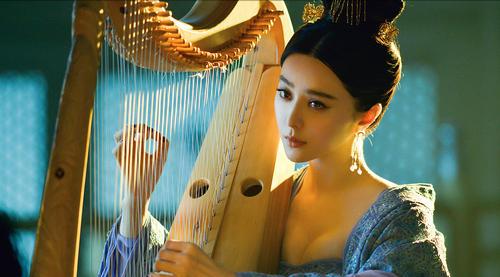Many people have always been very addicted to a saying that the Tang Dynasty is beautiful for fat. Then he fantasized that after returning to the Tang Dynasty, he would either become a generation of handsome young people and gentlemen, or become a generation of peerless beauties who would bring calamity to the country and the people. Is it true that this Tang Dynasty was fat as beautiful? Why do you believe this? The most powerful source is the Northern Song Dynasty Su Shi's pen, describing Yang Guifei and Zhao Feiyan's huanfei yan thin word.

Secondly, we see some Tang Dynasty portraits and pottery figurines, of which the female image is relatively fat or even bloated, so this argument began to spread. However, at this time, Professor Qi Dongfang, the current professor and doctoral supervisor of the School of Archaeology of Peking University, dealt a heavy blow to our group of fat people who were intoxicated in fantasy.
Professor Qi Dongfang refuted the rumors, in fact, the Tang figurines characterized by thinness are the most common. In most of the time, including the early Tang Dynasty and the middle and late Tang Dynasties, the slender type was almost the characteristic of all Tang figurines at that time. Compared with the ring fat Yan thin of Su Shi in the Northern Song Dynasty, let's look at the poem of the Tang Dynasty poet Liu Xiyi, "Slim waist to make the bright moon, long sleeves dancing spring wind." "Once again, we're stomping our fat fantasies under our feet.
So are those bloated and fat Tang Dynasty pottery figurines and the fat sister in the portraits all fake? That is not just an aesthetic concept of fat as beauty, which lasted only a few decades in the Tang Dynasty. Specifically, from the time of Wu Zetian to the days of his grandson Li Longji, the paintings and figurines we saw were basically from that time.
There are two main reasons for this, the first is that Wu Zetian himself is this figure, the old Tang Book wrote that Princess Taiping because of her rich body, and is a generous face, Wu Zetian feels very similar to himself, so he especially likes her. The aesthetics of the emperor will inevitably affect the elite class, and the aesthetics of the elite class will further penetrate downwards. And with the improvement of women's status and the performance of self-confidence, a popular trend has gradually formed.
Therefore, the aesthetics of the Tang Dynasty began to develop from the slender waist of the early Tang Dynasty to the direction of round atmosphere. On the other hand, with the efforts of Emperor Taizong Li Shimin of Tang Dynasty and Emperor Gaozong of Tang and Li Zhi of Tang Dynasty, the overall national strength and territorial area of the Tang Dynasty reached an unprecedented peak, and the dynasty of all nations could be called the center of the world.
As a result, the exchange of cultures between the East and the West has become more frequent. Coupled with the fact that the old Li family originally had a part of the humble bloodline, then the aesthetics of the West and nomads for women's health and strength also began to affect the ordinary people in the Central Plains with the exchange of culture.